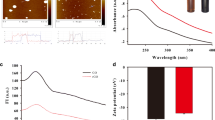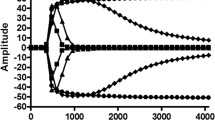Abstract
Cancer procoagulant (CP), a direct activator of coagulation factor X, is among one of the tumour cell products or activities which may promote fibrin formation and has been suggested to be selectively associated with the malignant phenotype. At present, the most reliable assay for the quantification of CP activity is the three-stage chromogenic assay which utilises the ability of CP to activate factor X. In this assay, the activation of factor X leads to the formation of activated thrombin from prothrombin and the eventual hydrolyses of a thrombin chromogenic substrate which contains a p-nitroaniline leaving group. The complexity of the three-stage chromogenic assay suggests a need for a direct method of assaying CP activity. This study focuses on the design of a fluorogenic substrate that would enable the direct quantification of CP activity. The results of the study show two promising substrates for the determination of CP activity: Boc-PQVR-AMC and PQVR-AMC. Further analysis showed that Boc-PQVR-AMC could be excluded as a potential substrate for CP since it was also cleaved by collagenase.







Similar content being viewed by others
Abbreviations
- AMC:
-
7-Amino-4-methylcoumarin
- MCA:
-
7-Methoxycoumarin-4-acetyl
- DMSO:
-
Dimethyl sulfoxide
- ECM:
-
Extracellular matrix
- FX:
-
Factor X
- RVV:
-
Russell’s viper venom
References
Gordon SG (1994) Cancer procoagulant. Methods Enzymol 244:568–583
Gordon SG, Cross BA (1981) A factor X-activating cysteine protease from malignant tissue. J Clin Invest 67:1665–1671
Kozwich DL, Kramer LC, Mielicki WP, Fotopoulos SS, Gordon SG (1994) Application of cancer procoagulant as an early detection tumour marker. Cancer 74:1367–1376
Mielicki WP, Tagawa M, Gordon SG (1994) New immune capture enzyme (ICE) assay for quantification of cancer procoagulant activity. Studies on inhibitors. Thromb Haemost 71:456–460
Gordon SG, Mourad AM (1991) The site of activation of factor X by cancer procoagulant. Blood Coagul Fibrinolysis 2:735–739
Low Ah Kee N, Krause J, Blatch GL, Muramoto K, Sakka K, Sakka M, Naudé RJ, Wagner L, Wolf R, Rahfeld JU, Demuth HU, Mielicki WP, Frost CL (2015) The proteolytic profile of human cancer procoagulant suggests that it promotes cancer metastasis at the level of activation rather than degradation. Protein J 34:338–348
Mielicki WP, Kozwich DL, Kramer LC, Gordon SG (1994) Effect of divalent ions on the activity of cancer procoagulant. Arch Biochem Biophys 314:165–170
Moore WR (1992) The purification and properties of cancer procoagulant from murine tumours. Biochem Biophys Res Commun 184:819–824
Lottenberg R, Christensen U, Jackson CM, Coleman PL (1981) Assay of coagulation proteases using peptide chromogenic and fluorogenic substrates. Methods Enzymol 80:341–361
Huseby RM, Smith RE (1980) Synthetic oligopeptide substrates: their diagnostic application in blood coagulation, fibrinolysis, and other pathologic states. Semin Thromb Haemost 6:175–314
Claeson G (1994) Synthetic peptides and peptidomimetics as substrates and inhibitors of thrombin and other proteases in the blood coagulation system. Blood Coag Fibrinolysis 5:411–436
Mielicki WP, Mielicka E, Gordon SG (1997) Cancer procoagulant activity studies using synthetic peptidyl substrates. Thromb Res 87:251–256
Mielicki WP, Gordon SG (1993) Three-stage chromogenic assay for the analysis of activation properties of factor X by cancer procoagulant. Blood Coag Fibrinolysis 4:441–446
Friedlander M, Brooks PC, Shaffer RW, Kincaid CM, Varner JA, Cheresh DA (1995) Definition of two angiogenic pathways by distinct av integrins. Science 270:1500–1502
Brooks PC, Strömblad S, Sanders LC, von Schalscha TL, Aimes RT, Stetler-Stevenson WG, Quigley JP, Cheresh DA (1996) Localization of matrix metalloproteinase MMP-2 to the surface of invasive cells by interaction with integrin αVβ3. Cell 85:683–693
Varner JA, Cheresh DA (1996) Integrins and cancer. Curr Opin Cell Biol 8:724–730
Pytela R, Pierschbacher MD, Ruoslahti E (1985) A 125/115 kDa cell surface receptor specific for vitronectin interacts with the arginine-glycine aspartic acid adhesion sequence derived from fibronectin. Proc Natl Acad Sci 82:5766–5770
Kieffer N, Fitzgerald LA, Wolf D, Cheresh DA, Phillips DR (1991) Adhesive properties of the β3 integrins: comparison of GP IIb-IIIa and the vitronectin receptor individually expressed in human melanoma cells. J Cell Biol 113:451–461
Charo IF, Nannizzi L, Smith JW, Cheresh DA (1990) The vitronectin receptor αVβ3 binds fibronectin and acts in concert with α5β1 in promoting cellular attachment and spreading on fibronectin. J Cell Biol 111:2795–2800
Wennerberg K, Lohikangas L, Gullberg D, Pfaff M, Johansson S, Fässler R (1996) β1 integrin dependent and independent polymerization of fibronectin. J Cell Biol 132:227–238
Garcia AJ, Schwarzbauer JE, Boettiger D (2002) Distinct activation states of alpha5beta1 integrin show differential binding to RGD and synergy domains of fibronectin. Biochemistry 41:9063–9069
Hong A, He J (2010) Facile solid-phase synthesis of peptide-7-amino-4-methylcoumarin conjugates (peptide-AMCs) using a novel AMC resin. J Biomol Tech 21:S45–S46
Irvine GB, Ennis M, Williams CH (1990) Visual detection of peptidase activity using fluorogenic substrates in a microtiter plate assay. Anal Biochem 185:304–307
Marathe GK, Johnson C, Billings SD, Southall MD, Pei Y, Spandau D, Murphy RC, Zimmerman GA, McIntyre TM, Travers JB (2005) Ultraviolet B radiation generates platelet-activating factor-like phospholipids underlying cutaneous damage. J Biol Chem 280:35448–35457
Li T, Southall MD, Yi Q, Pei Y, Lewis D, Al-Hassani M, Spandau D, Travers JB (2003) The epidermal platelet-activating factor receptor augments chemotherapy-induced apoptosis in human carcinoma cell lines. J Biol Chem 278:16614–16621
Johnson I, Spence MTZ (2010) Molecular probes handbook: a guide to fluorescent probes and labelling technologies, 11th edn. Life Technologies, Inc., Eugene, p. 401
Low Ah Kee N, Naude RJ, Blatch GL, Frost CL (2012) The effect of cancer procoagulant on expression of metastatic and angiogenic markers of breast cancer and embryonic cell lines. Biol Chem 393:113–121
Laemmli UK (1970) Cleavage of structural proteins during the assembly of the head of bacteriophage T4. Nature 227:680–685
Turzynski A, Mentlein R (1990) Prolyl aminopeptidase from rat brain and kidney. Action on peptides and identification as leucyl aminopeptidase. Eur J Biochem 190:509–515
Pierschbacher MD, Ruoslahti E (1984) Cell attachment activity of fibronectin can be duplicated by small synthetic fragments of the molecule. Nature 309:30–33
Johansson S, Forsberg E, Lundgren B (1987) Comparison of fibronectin receptors from rat hepatocytes and fibroblasts. J Biol Chem 262:7819–7824
Aota S, Nagai T, Yamada KM (1991) Characterization of regions of fibronectin besides the arginine-glycine-aspartic acid sequence required for adhesive function of the cell-binding domain using site-directed mutagenesis. J Biol Chem 266:15938–15943
Gordon SG, Mielicki WP (1997) Cancer procoagulant: a factor X activator, tumour marker and growth factor from malignant tissue. Blood Coagul Fibrinol 2:78–86
Flock T, Venkatakrishnan AJ, Vinothkumar KR, Babu MM (2012) Deciphering membrane protein structures from protein sequences. Genome Biol 13:160–163
Acknowledgements
The authors would like to thank the anonymous reviewers as well as the editor for their valuable comments to improve the quality of the final version of the paper. They would also like to thank the nursing staff of the maternity unit of Greenacres Hospital (Port Elizabeth, South Africa) for the collection of tissue samples. This research was funded by the National Research Foundation of South Africa.
Author information
Authors and Affiliations
Corresponding author
Ethics declarations
Conflict of interest
Authors declare no potential conflicts of interest.
Ethical Approval
All procedures performed in studies involving human participants were in accordance with the ethical standards of the institutional and/or national research committee and with the 1964 Helsinki declaration and its later amendments or comparable ethical standards.
Rights and permissions
About this article
Cite this article
Krause, J., Frost, C.L. In Vitro Screening of Synthetic Fluorogenic Substrates for Detection of Cancer Procoagulant Activity. Protein J 37, 151–163 (2018). https://doi.org/10.1007/s10930-018-9758-x
Published:
Issue Date:
DOI: https://doi.org/10.1007/s10930-018-9758-x




